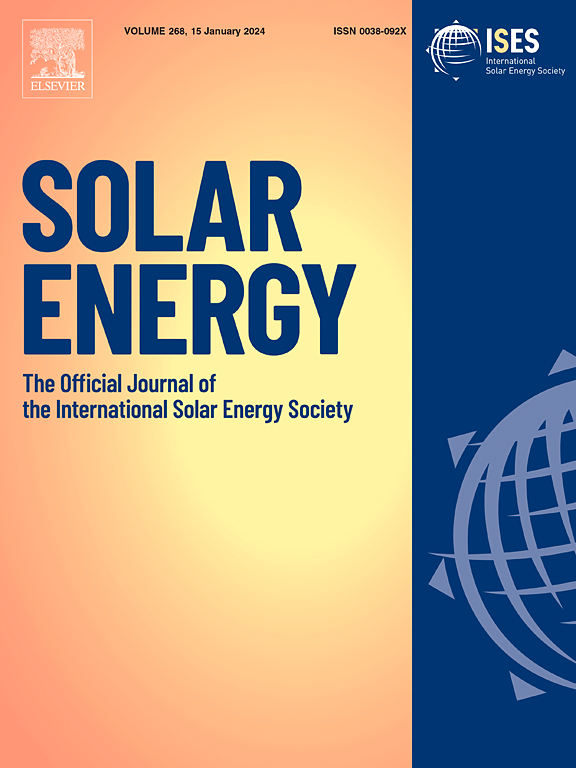Review of solar thermal technologies in sustainable animal agriculture farms: Current and potential uses
IF 6
2区 工程技术
Q2 ENERGY & FUELS
引用次数: 0
Abstract
At least 14.5% of the total greenhouse gas emissions significantly contributed from animal agriculture, emphasize the importance of more sustainable practices on farms. Solar thermal technologies offer a promising solution by providing clean energy for several key processes within animal agriculture, such as (1) drying animal feed, (2) drying animal products, and (3) heating processes. We comprehensively review the current and potential uses of solar thermal technologies for each of these processes, including the demand calculation and drying kinetics in the process. The pre-calculation phase of each process, including accurate demand calculations and the modeling of drying kinetics, is critical to optimizing the system’s performance. We also identify research gaps that need to be explored. For drying animal feed, most studies focus on food waste and are conducted in tropical regions. We show that there is significant potential to cut emissions further by applying solar thermal technologies to simply drying regular animal feed. Future research should examine technical and management challenges to make solar-powered drying a continuous process. Similarly, research on drying animal products mostly takes place in tropical countries, focusing on specified products like beef and fish. Expanding these studies to cover a wider range of products and incorporating additional preservation methods into drying kinetics calculations will help improve system sizing. Most solar heating research is based in Europe and often focus at hybrid systems that integrate solar thermal and photovoltaic (PV) technologies to meet electricity needs. There is a need for more studies on different heating applications, such as chicken brooders, and how hybrid PV systems can address continuous electricity demands. Additionally, more work is needed to evaluate the overall applicability of solar drying technologies in various regions and to establish standardized measures of emission reductions per kilogram of protein.
太阳能热技术在可持续畜牧业中的应用综述:当前和潜在的应用
至少14.5%的温室气体排放主要来自畜牧业,强调了在农场采取更可持续做法的重要性。太阳能热技术提供了一个很有前途的解决方案,它为动物农业中的几个关键过程提供清洁能源,例如(1)动物饲料干燥,(2)动物产品干燥,以及(3)加热过程。我们全面回顾了太阳能热技术在这些过程中的当前和潜在用途,包括需求计算和过程中的干燥动力学。每个过程的预计算阶段,包括精确的需求计算和干燥动力学建模,对于优化系统性能至关重要。我们还确定了需要探索的研究空白。对于动物饲料的干燥,大多数研究集中在食物浪费上,并在热带地区进行。我们表明,通过将太阳能热技术应用于简单干燥普通动物饲料,有进一步减少排放的巨大潜力。未来的研究应该检查技术和管理上的挑战,使太阳能干燥成为一个连续的过程。同样,对干燥动物产品的研究主要发生在热带国家,重点是牛肉和鱼等特定产品。将这些研究扩展到更广泛的产品范围,并将额外的保存方法纳入干燥动力学计算将有助于改善系统尺寸。大多数太阳能加热研究都是在欧洲进行的,通常集中在将太阳能热和光伏(PV)技术结合起来以满足电力需求的混合系统上。有必要对不同的加热应用进行更多的研究,比如养鸡场,以及混合光伏系统如何满足持续的电力需求。此外,还需要开展更多的工作来评价太阳能干燥技术在各个区域的总体适用性,并确定每公斤蛋白质排放量减少的标准化措施。
本文章由计算机程序翻译,如有差异,请以英文原文为准。
求助全文
约1分钟内获得全文
求助全文
来源期刊

Solar Energy
工程技术-能源与燃料
CiteScore
13.90
自引率
9.00%
发文量
0
审稿时长
47 days
期刊介绍:
Solar Energy welcomes manuscripts presenting information not previously published in journals on any aspect of solar energy research, development, application, measurement or policy. The term "solar energy" in this context includes the indirect uses such as wind energy and biomass
 求助内容:
求助内容: 应助结果提醒方式:
应助结果提醒方式:


